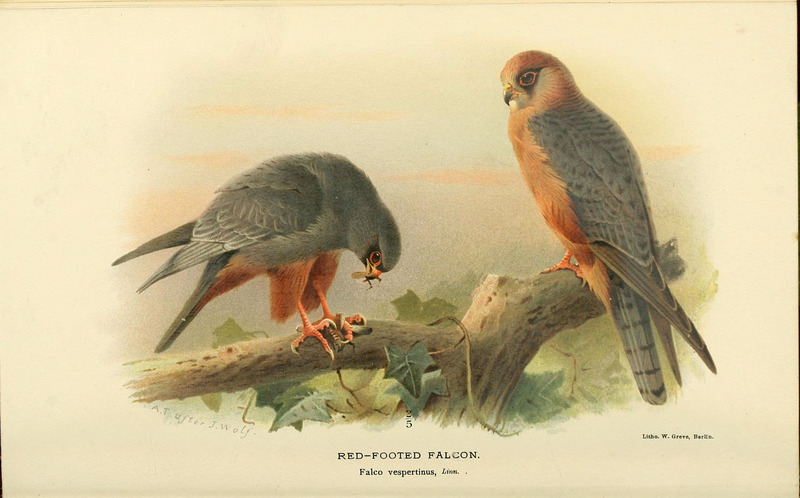|
| 질의: Birds of prey | 결과: 346번째/1662 | |
red-footed falcon (Falco vespertinus)
| 제목: | red-footed falcon (Falco vespertinus)
| | 올린이: | Wiki Photos (---@---.---)
| |

| 해상도: 2953x1839
파일크기: 587194 Bytes
촬영일: 2011:08:10 09:19:42
등록시간: 2017:05:11 10:39:06
|
RED-FOOTED FALCON - Falco vespertinus, Linn.
Date 1885
Source http://www.flickr.com/photos/biodivlibrary/6028615025
Author Keulemans, J. G.; Lilford, Thomas Littleton Powys; Newton, Alfred; Salvin, Osbert; Thorburn, Archibald
Full title Coloured figures of the birds of the British Islands / issued by Lord Lilford.
Source: https://commons.wikimedia.org/wiki/File:Coloured_figures_of_the_birds_of_the_British_Islands_-_issued_by_Lord_Lilford_(6028615025).jpg
The red-footed falcon (Falco vespertinus), formerly western red-footed falcon, is a bird of prey. It belongs to the family Falconidae, the falcons. This bird is found in eastern Europe and Asia. It is migratory, wintering in Africa. It is a regular wanderer to western Europe. |
^o^
동물그림창고 똑똑전화 누리집
^o^
|
|